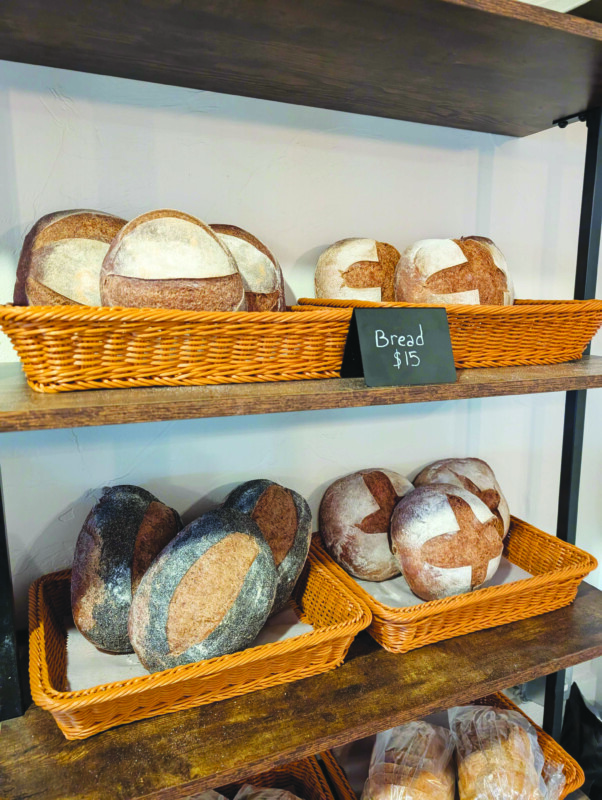Dishon Bakery crafts artisanal bread loaves without the wheat
Evan Lang described his perfect, platonic ideal of a loaf of bread.
Made of flour, water, yeast and salt, it “would have a thick crust to give it a little bit of character,” he said, “baked pretty dark — caramelized in a way that you get flavor also from the crust. “The crumb should be relatively open. It should not fall apart; it should stay together, and it should not be gummy, meaning if you take the knife and you cut into it, we don’t want anything stuck on the blade.”
One of Lang’s missions in life is to make that bread, but without any gluten. At Dishon Bakery in Manchester, he is doing it.
Gluten is a stretchy protein found in wheat and a few other grains that helps give conventional bread its texture. As yeast ferments various nutrients in wheat flour, it gives off carbon dioxide gas, which is trapped by the stretchy gluten fibers in bread dough, allowing the dough to puff up — what bakers call “rise.” Unfortunately, some people — those with celiac disease, for instance — can’t digest gluten, and others choose not to eat it for nutritional reasons, so for bakers like Lang the trick is to find a way of duplicating gluten’s stretchiness without the actual gluten.
“If you go to the supermarket and you check out the gluten-free bread there, it’s not great,” Lang said. “It’s either small or crumbly. And if you’re looking at the ingredients, it’s more like cake; it’s full of sugar, it’s full of starches. We’re creating a product that’s a little more artisanal — kind of like real bread.” The secret, he said, is a slow, cold fermentation, and high hydration — meaning that his dough has more water in it than conventional wheat breads.
“Traditionally, bread and pizza have different hydration percentages,” he explained, “from 60 percent up to 100 percent for really, really Neapolitan-style pizza. “Our breads are all over 100 percent hydration.” This means that Dishon’s bread dough has more water than flour in it. By fermenting it slowly, at a low temperature, Lang gives it time to completely incorporate all that water.
Lang’s dough starts with brown rice, sorghum and millet flours — all gluten-free grains — and potato and tapioca starch, then builds the dough up to the point where it can be treated much like wheat dough.
“We bake on a stone like regular bread,” he said. “Traditionally gluten-free bread is kind of like a batter. It’s baked in a tin and ours are baked free-form on the stone.”
Dishon Bakery started as a cottage business in New Jersey in 2022.
“We were selling in farmers markets, and we very quickly outgrew that,” Lang remembered. “We moved to Philadelphia and we were baking in a commercial kitchen there and doing a lot of wholesale, continuing with farmers markets and shipping online. We were doing a pretty good online business. People would order online, we’d package it up and ship it out. We moved up here and we re-evaluated what we were doing.” The Langs decided to focus more on face-to-face interactions with their customers. “Since we did have enough demand for the product, it made no sense for us to sell more [wholesale]. So we’re going to try here to exclusively do retail, direct to consumer.”
Many gluten-free bakeries produce mostly sweet products — cookies, cakes, pastries and so on — but Dishon focuses almost exclusively on bread products. Lang keeps a freezer case with other gluten-free products for customers who are looking for something less bready.
“We have sweets that are New Hampshire-based,” Lang said. “We want to give them an outlet here. None of them are based in Manchester. So this brings their product to Manchester and also allows us to fill the case with products that we don’t do and we don’t specialize in.”
Dishon Bakery
915 Elm St., Manchester
Open Thursday through Saturday, 9 a.m. to 3 p.m.
Orders can be placed online at dishonbakery.com






